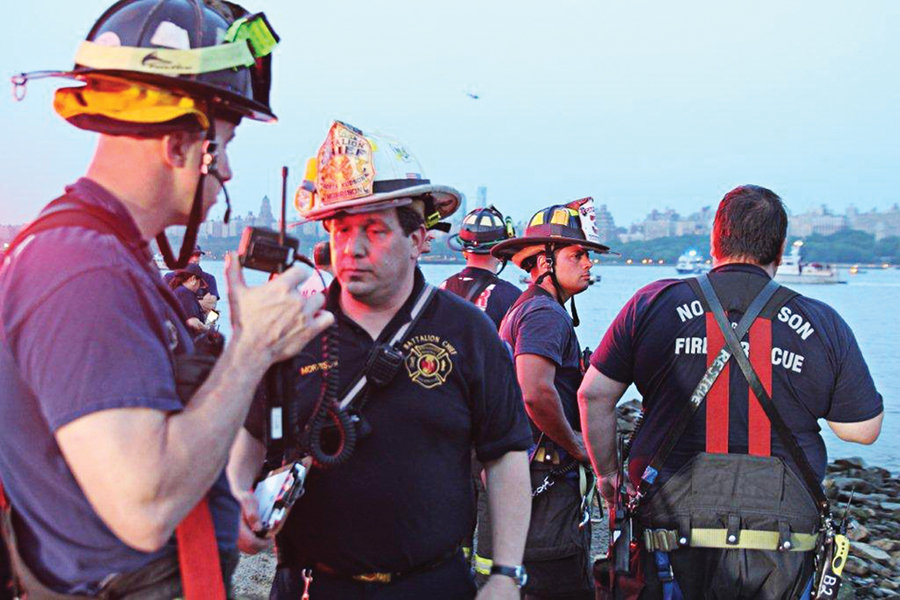When a vintage WWII plane crashed into the Hudson River near North Bergen and West New York a week ago Friday, North Hudson Regional Fire and Rescue, the North Bergen Police Department, and their EMS had to spring into action to help New York police and fire departments complete the rescue.
The pilot, who passed away, was identified as William Gordon, 56, of Key West, Florida. He and the 1944 P-47 Thunderbolt were to perform in a group of three in The Jones Beach Air Show in New York.
The air show included veterans, sailors, Marines, and Coast Guardsmen flying in synchronized patterns in war planes.
“We got a call, maybe from an eyewitness, around 7:30 p.m. and time was ticking.” – Deputy Chief Charles Thomas
____________
“We got a call, maybe from an eyewitness, around 7:30 p.m. and time was ticking,” Thomas added. According to Thomas, the New York Police Department and the Fire Department of New York were there with divers on the scene.
The plane crashed close to Waterside Restaurant in North Bergen, and Thomas said there were many eyewitnesses and videos. “This plane went down quickly,” Thomas added, “Some eyewitnesses said it went down in 30 seconds, and a lot of eye witnesses said they saw smoke before it went down.”
The NHRFR were in communication with the FDNY from their radio system, and stayed in contact over the phone with the NYPD.
“We set up a command center on the New Jersey side with North Bergen police, North Bergen OEM, North Bergen EMS, and officials of West New York and Weehawken,” he said.
He said the NHRFR dispatched a marine unit on the water with fire and rescue ability. Thomas also said they set up a command center on 7800 River Road.
“We knew it’d be the best place to bring the survivor. There’s a hospital close by [Palisades]. But we realized the person was under water in the plane, so the divers worked hard to get there.”
The water was rough to begin with, and Thomas said the tide changed around 8:30 p.m. “There would have been more of a chance of survival if the tide wasn’t so rough. It took the divers a while to get there,” Thomas added, “It was pretty dark under there, and dusk was coming so the visibility was decreasing.”
Divers worked tirelessly, Thomas said. The first two divers came down from a helicopter.
“The NYPD had the tail of the aircraft tied up with a rope, but divers still found it difficult to get to. The divers said they used extreme effort and were exhausted afterwards,” he added, “There were very swift currents. The divers said they were in danger, because of that and the effort it took to get to the aircraft.”
The body was recovered approximately at 10:30 p.m. and taken to New York, according to Thomas. The next day the aircraft was recovered by the Army Corps of Engineers.
Samantha Meyers can be reached at samantham@hudsonreporter.com .
